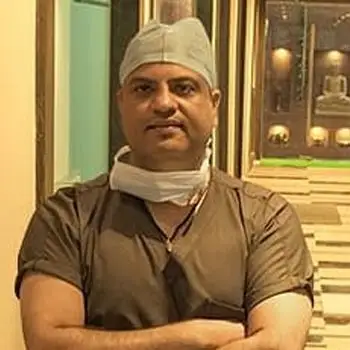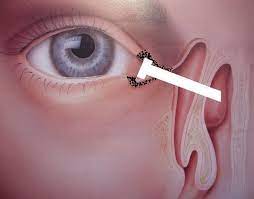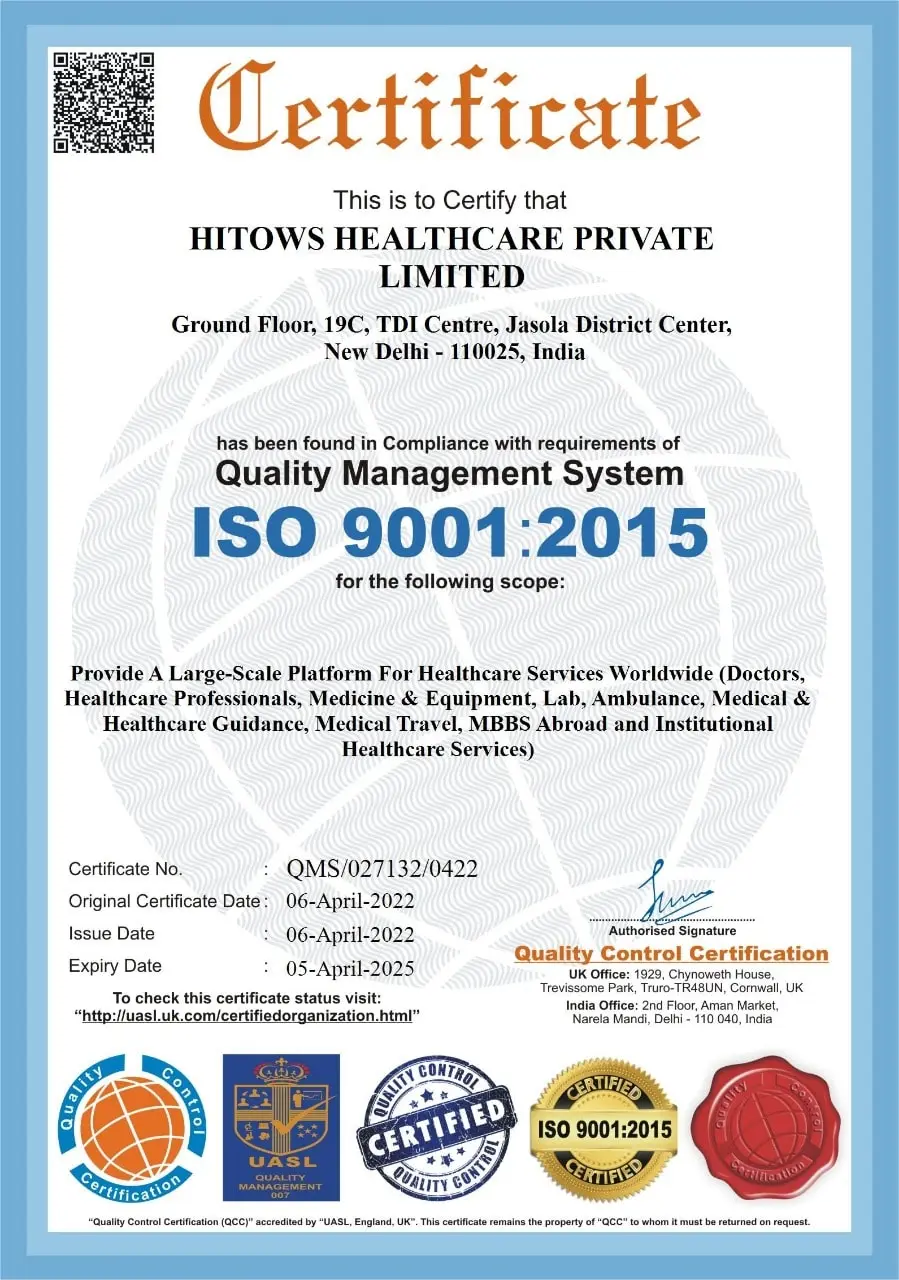DCT Dacryo Cystectomy Surgery Single Eye
India
-
Our Price USD 1067
-
Hospital Price USD 1123
-
You Save : USD 56
Booking Amount: USD 107. Pay Remaining 90% at the hospital.
Book NowAdditional Credit
Among the important extras we offer as part of the Additional Credit are the following:
-
Site Tourism For The Patient & Attendant
-
Airport Pick & Drop Service
-
Ambulance service at airport
-
Priority appointments with The Doctor
-
Cancel Easily Anytime with Full Refund
-
Room Upgradation
-
Free Online Doctor Consultation Valued at USD 20
-
Free hotel Stay for 5 to 7 days Accordingly
-
Welcome Kit at Arrival
-
Interpreter
-
Medical Visa Assistance
What is Included?
- Doctor consultation charges
- Lab tests and diagnostic charges
- Room charges inside hospital during the procedure
- Surgeon Fee
- Cost of implant
- Nursing charges
- Hospital surgery suite charges
- Anesthesia charges
- Routine medicines and routine consumables (bandages, dressings etc.)
- Food and Beverages inside hospital stay for patient and one attendant.
What is not Included?
- Extra Radiology Investigations
- Healthcare Professionals Charges of other consultations.
- Other Requested Services such as Laundry etc.
- Additional Pharmaceutical Products and Medicines After Discharge from Hospital.
- Management of Conditions Unrelated to Procedures or Pre-Existing.
- The cost of any additional implants will be in addition to the package cost.
Package Description
DCT Dacryo Cystectomy Surgery:
DCT stands for dacryocystectomy, which is the surgical removal of the lacrimal sac completely.
DCT is often used when a lacrimal sac tumour is suspected, but it can also be used in cases of dacryocystitis with considerable lacrimal discharge and an enlarged or changed lacrimal sac since it avoids the intra- and postoperative problems associated with dacryocystorhinostomy.
The surgery is performed to alleviate the symptoms of a clogged tear duct. Excessive eye watering or crusting around the eye are examples.
There is no osteotomy or breaching of the nasal mucosa in DCT surgery, hence there is a lower risk of aspiration pneumonia owing to intraoperative nasal bleeding.
Disease Overview:
Blocked tear duct
When your nasal passageways can't properly drain tear liquid from your eyes, you have a clogged tear duct. Itchy, irritated, or watery eyes are possible symptoms. Babies are sometimes born with clogged tear ducts. It's possible that a clogged tear duct may heal on its own, but it's also possible that surgery will be required.
Disease Signs and Symptoms:
- Excessive tearing is one of the signs and symptoms of a clogged tear duct.
- The white area of the eye is red.
- Inflammation or infection of the eyes on a regular basis (pink eye)
- Swelling around the inside corner of the eye that is painful.
- The eyelids are crunching.
- Mucus or pus discharge from the eye's lids and surface.
- Vision is hazy.
Disease Causes:
The microscopic apertures that drain tears (puncta) may constrict as you get older, producing obstruction. Inflammation or infection. Tear ducts can get clogged as a result of an infection or inflammation in your eyes, tear drainage system, or nose. Trauma or injury
Disease Diagnosis:
Your doctor will chat with you about your symptoms, check your eyes, and do a few tests to determine your illness. He or she will also look into your nose to see if any structural problems with your nasal passageways are obstructing your breathing. If your doctor detects a clogged tear duct, he or she may order further testing to determine the exact site of the obstruction.
The following tests are used to identify a clogged tear duct:
A tear drainage test is performed. This test determines how rapidly your tears evaporate. On the surface of each eye, a drop of a specific dye is applied. If most of the dye is still on the surface of your eye after five minutes, you may have a clogged tear duct.
Irrigation and probing: To assess how properly your tear drainage system is draining, your doctor may flush a saline solution through it. He or she may also use a slim device (probe) to examine for blockages in the tiny drainage openings at the corner of your lid (puncta). This probing may potentially solve the problem in certain circumstances.
Examinations of the eyes. A contrast dye is delivered via your tear drainage system from the puncta in the corner of your lid for these operations. The position and source of the obstruction are then determined using X-ray, computed tomography (CT), or magnetic resonance imaging (MRI).
Disease Treatment:
Your therapy will be determined by the cause of the clogged tear duct. It's possible that you'll need more than one way to solve the problem. If your blocked tear duct is caused by a tumour, therapy will focus on the tumor's source. Your doctor may recommend that you have surgery to remove the tumour, or that you try alternative therapies to lessen it.
Infection-fighting medications If your doctor believes you have an infection, antibiotic eyedrops or tablets may be prescribed.
Massage or wait-and-see. Babies born with a clogged tear duct typically recover without therapy. This can happen throughout the first several months of life when the drainage system grows. The hole that discharges into the nose is frequently covered by a thin tissue barrier.
If your baby's clogged tear duct doesn't improve, his or her doctor may educate you how to open the membrane with a particular massage method.
Whether you've experienced a face injury that caused your tear ducts to get clogged, your doctor may advise you to wait a few months to see if the situation improves while your injury heals. Your tear ducts may get unblocked on their own when the swelling goes down.
Probing, dilation, and flushing This procedure is performed under general anaesthesia on babies. With a specific dilation equipment, the doctor enlarges the punctal apertures and inserts a thin probe through the puncta and into the tear drainage system.
First the patient is given a general anesthetic. Then the doctor threads through the tear duct blockage in the nose a tube (catheter) with a deflated balloon on the tip. He or she inflates and deflates the balloon a few times to open the blockage.
Surgery
The surgery that's commonly used to treat blocked tear ducts is called dacryocystorhinostomy. This procedure opens the passageway for tears to drain out your nose again. You'll be given a general anesthetic, or a local anesthetic if it's performed as an outpatient procedure.
The steps in this procedure vary, depending on the exact location and extent of your blockage, as well as your surgeon's experience and preferences.
External. With external dacryocystorhinostomy, your surgeon makes an incision on the side of your nose, close to the lacrimal sac. After connecting the lacrimal sac to your nasal cavity and placing a stent in the new passageway, the surgeon closes up the skin incision with a few stitches.
Endoscopic or endonasal. With this method, your surgeon uses a microscopic camera and other tiny instruments inserted through the nasal opening to your duct system. This method requires no incision so leaves no scar. But the success rates aren't as high as with the external procedure.
Following surgery you'll use a nasal decongestant spray and eyedrops to prevent infection and reduce inflammation. After six to 12 weeks, you'll return to your doctor's office for removal of any stents used to keep the new channel open during the healing process.
A general anaesthetic is administered to the patient first. The doctor next inserts a tube (catheter) with a deflated balloon on the tip through the tear duct obstruction in the nose. To open the obstruction, he or she inflates and deflates the balloon many times.
Information related to Treatment
Package Details
Days in Hospital
1 Days
Days in Hotel
*
8 Days
Room Type
Private

Treating Doctor
Dr. Suraj Munjal
Ophthalmologist- Retina Surgeon, Cataract Surgeon, Lasik surgeon, Vitreo Retina Surgeon, Eyelid Surgery, Trabeculectomy, Vitreoretinal Surgery, Orbital & Oculoplastic surgery, Refractive surgery, Retina Examination, Glaucoma Evaluation / Treatment, Canaloplasty, Corneal Surgery, Eye Muscle Surgery, Orbital Surgery, Anterior Segment Surgery, Orbital Decompression Surgery for Thyroid Eye Disease, Orbital Trauma, Diabetic Retinopahy, YAG laser Posterior Capsulotomy, Anterior Retinal Cryotherapy, Retinal Surgery, Lens for Keratoconus
The Sight Avenue Eye Hospital Delhi, India
19 Years of Experience


